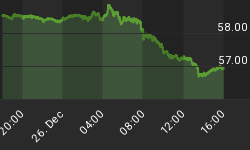The U.S. Dollar felt pressure overnight on Tuesday because of stronger Asian and European stock markets and struggled even more after the release of the ADP Employment Services Report.
The move into equities triggered more demand for higher yielding assets and kept pressure on the low yielding U.S. Dollar. The move was a surprise because of Thursday's U.S. Unemployment Report. Some traders felt the rally was overdone because of thin trading conditions ahead of the report.
Wednesday's ADP Employment Services Report encouraged more selling pressure on the Dollar as the actual report fell 26,000 jobs short of pre-report guesses. The actual number of jobs lost was 473,000 versus a guess of 498,000.
Despite being better than expected, this report showed that the labor market is still worsening while the whole U.S. economy may be showing signs of improvement. Investors realize that labor is a lagging indicator and that improvements may not be seen for months. Nonetheless, this number showed that the unemployment rate may hit 10%.
The EURUSD poked its head over a main top at 1.4177 to technically turn the main trend to up. There was no acceleration to the upside following this move which leads me to believe that thin market conditions helped to contribute to the attempted breakout.
The European Central Bank meets on Thursday. Traders expect the ECB to leave interest rates unchanged at 1.0% even though earlier in the week, the Euro Zone reported negative inflation. Instead of cutting rates, the ECB may be considering an alternative stimulus plan to help revive the economy. Traders will be glued to the comments after the report to help gauge future movement of this currency pair.
Among investor concerns is the price level of the Euro. Some investors fear the ECB will take action if the rise in the Euro shows that it has had a negative effect on Euro Zone exports.
Traders continued to react negatively to the report showing the U.K. economy had its biggest drop since 1958. The recession currently being felt by Britain is now even deeper than previously estimated. The Bank of England is on record warning people that the road to recovery will be long and hard.
After posting a new high for the year on Tuesday, the GBP USD closed lower and followed through to the downside on Wednesday. The short-term weakness is no threat to the uptrend, but a close under 1.6522 on Friday will reverse the week to down and could lead to selling pressure next week.
The USD JPY continued its slow grind higher on Wednesday, but weakened into the close as traders took precautions ahead of Thursday's U.S. Non-Farm Payroll Report. Some traders lightened up their positions while others bucked the trend and went short in anticipation of a worse than expected employment number.
Traders are estimating that today's U.S. Non Farm Payroll Report will show a loss of 365,000 jobs in June. This figure would push the U.S. Unemployment Rate to 9.6%. Because of Friday's U.S. market holiday, it is hard to say whether traders will be around to trade the number or if they will wait until Monday to trade the news. Either way, the initial reaction should be volatile especially if the guesses miss by a lot.
















